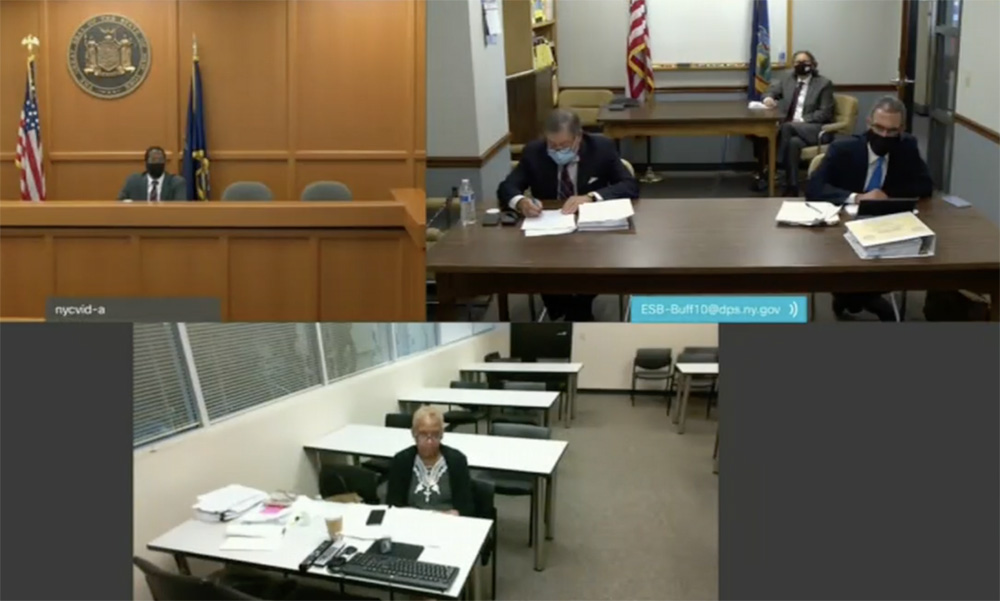
New York regulators on Thursday established a new category of transmission and distribution investments — those made to help achieve the state’s environmental goals — and directed investor-owned utilities to revise their proposed benefit-cost analyses and to resubmit them within 90 days (20-E-0197).
Citing the urgency of climate challenge and the statutory mandates of the Climate Leadership and Community Protection Act (CLCPA), the Public Service Commission’s order said that if other changes to proposed investment criteria are warranted in light of changes to the benefit-cost analysis, the utilities are required to file those as well.

The CLCPA requires that 70% of electricity generation come from renewable resources by 2030 and that generation be 100% carbon-free by 2040.
“Today does usher in a new era of transmission planning in New York state,” said PSC Chair John B. Howard. “Traditional planning by utilities was to serve their native load, specifically, based on a fossil and nuclear-based system. This paradigm will redesign the system to meet renewable goals statewide and will require an unprecedented level of cooperation between transmission owners.”
Phase 1 projects are traditional utility investments that address system reliability or resilience issues, while phase 2 projects are investments made primarily for the purpose of achieving CLCPA. The new order on local transmission and distribution planning processes and phase 2 project proposals requires the utilities to work with stakeholders, Department of Public Service (DPS) staff and NYISO to develop and then file a transmission planning process that meets the standards for transparency, consistency of models and coordination established in the order.
“While the order recognizes that this will be a significant effort, it is essential to the implementation of the act and a filing is required within 90 days,” Elizabeth Grisaru, deputy director of the DPS Office of Electric Gas and Water, said during the PSC’s regular monthly meeting.
The utilities outlined their methodology in a November 2020 report, which the state considered in a study released by the New York State Energy Research and Development Authority (NYSERDA) and DPS in January. (See NY Looks to Improve Tx Headroom Assessments.)
The order noted that mechanisms for cost recovery and cost allocation for this new type of investment do not yet exist and approved the utilities’ proposal to charge the costs of phase-2 projects across ratepayers under a volumetric load ratio share allocation.
Funding and Utilities Forum
The PSC also found that a FERC-approved participant funding agreement among the utilities could establish an equitable system for sharing the costs of these projects. However, additional study is needed on how to implement such an agreement. A further filing on this topic is required within 120 days after consultation with staff, Grisaru said.
The commission rejected the utilities’ proposal to bring their potential phase-2 investments into the commission’s ongoing rate cases; rather, the commission will establish a specific forum for coordinated review of those projects and their costs from a whole state perspective and on a repeatable cycle.
While the order did not approve any phase-2 projects, it recognized that there are certain areas of the state where renewable generation already is bottled and where additional generation projects are either in development or anticipated, Grisaru said.
The order directs the relevant utility companies to address these areas of concern with detailed phase-2 proposals, including options based on their assessment of these areas’ development potential. The proposals are due within 180 days.
Lastly, the order adopts staff’s recent proposal for revising the way the utilities calculate headroom on the grid — that is the system’s ability or capacity to integrate renewable generation in order to support the CLCPA’s goals. The order directs the utilities to provide updated headroom data to DPS staff, NYISO and potential bidders no later than Feb. 1, 2022.
During the PSC meeting, Commissioner Diane Burman sought clarification on next steps, including the timeline for the forum for coordinated review of the phase-2 investments.
“Jan. 1, 2023, per the statute for the Accelerated Renewable Energy Growth Act, is supposed to be the kickoff for the commission’s first review of this transmission and distribution planning program, so we thought that provided a good touchstone and also provided enough time for the utilities to engage in the revamped planning process that we are contemplating and to produce an effective and well-coordinated portfolio of potential projects,” Grisaru said.
In creating a new public policy planning process, the commission identified FERC as the entity that might may be able to assist in terms of rate recovery, and broke the proceeding up into two parts, local distribution and bulk power system issues outside of offshore wind, to make it more manageable, Burman said.
Burman also sought clarification on the status of that process.
“Again referring to the results of the power grid study, we the staff recommended that the commission pay very close attention to the cycle of bulk system studies so as to stay ahead of the bulk system needs that we expect to emerge, particularly as we get into 2030, so we are right now continuing to rely on those processes,” Grisaru said. “We expect to take up that question and expect to bring back to this commission some further recommendations relating to the power grid study in a subsequent order.”
The commission also approved the second construction phase of the 86-mile, $484 million Smart Path project by New York Power Authority in St. Lawrence County, and approved the 12-mile, approximately $100 million Rock Tavern to Sugarloaf transmission project in Orange County by New York Transco.
The latter project is being built in connection with a larger transmission line upgrade known as the New York Energy Solution, which is designed to provide additional transmission capacity to move power from upstate to downstate and is to be operational by December 2023. (See NYPSC OKs Rebuilding Upstate Tx Lines.)


